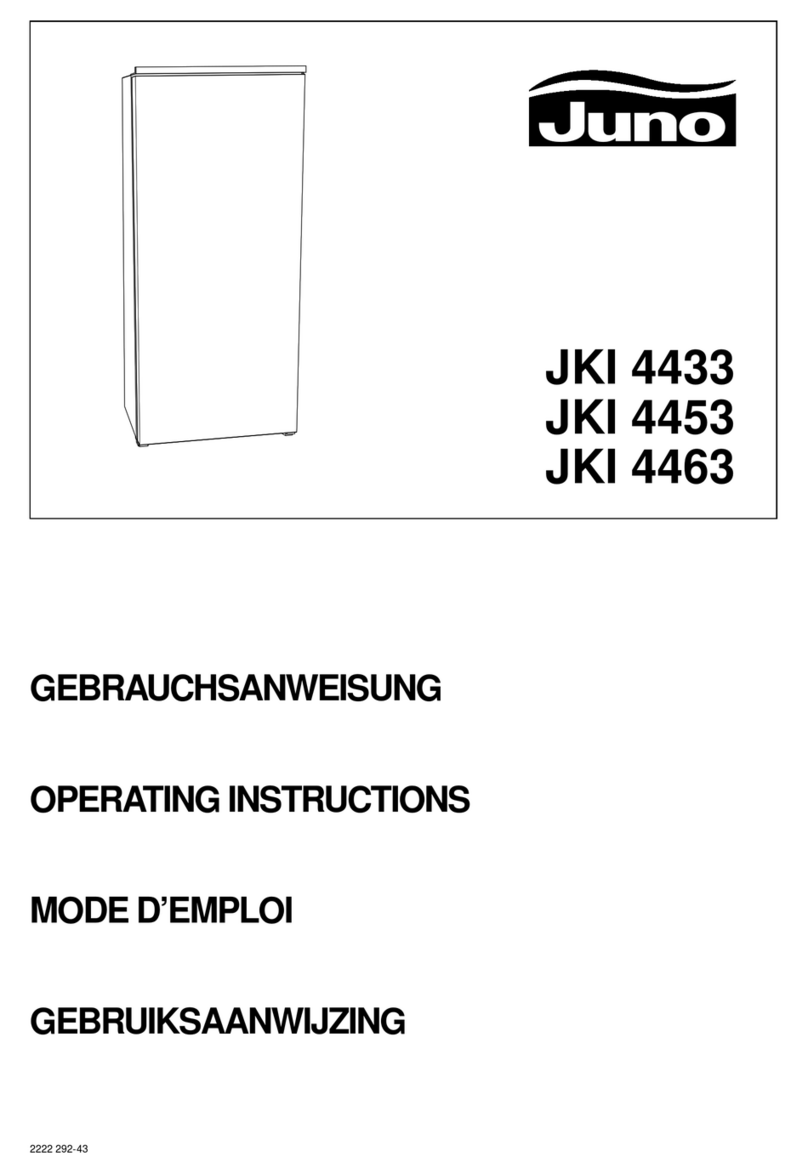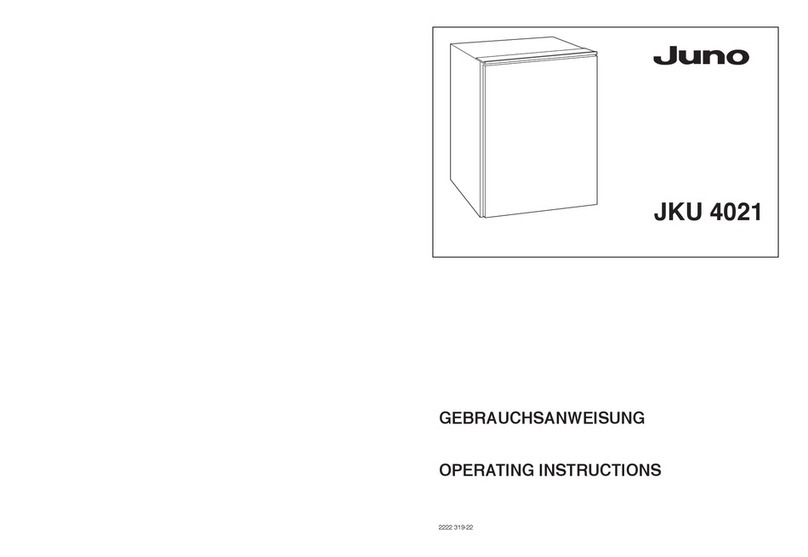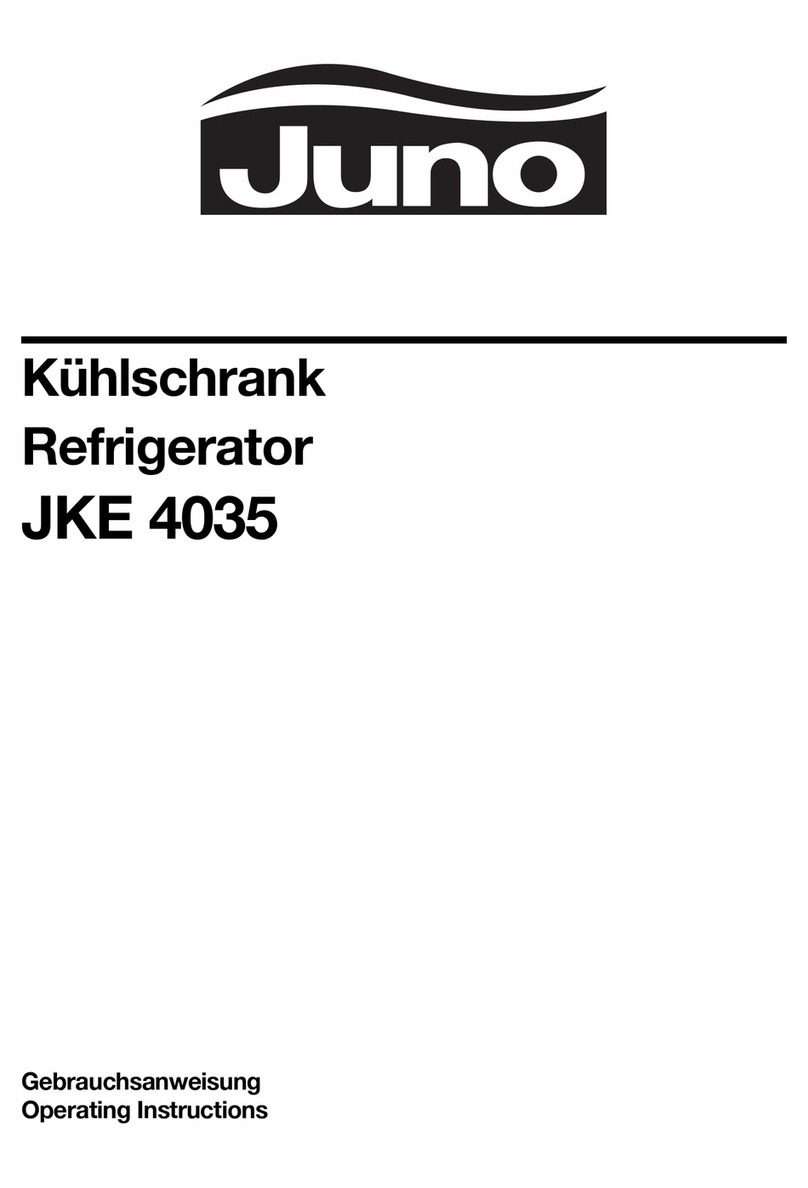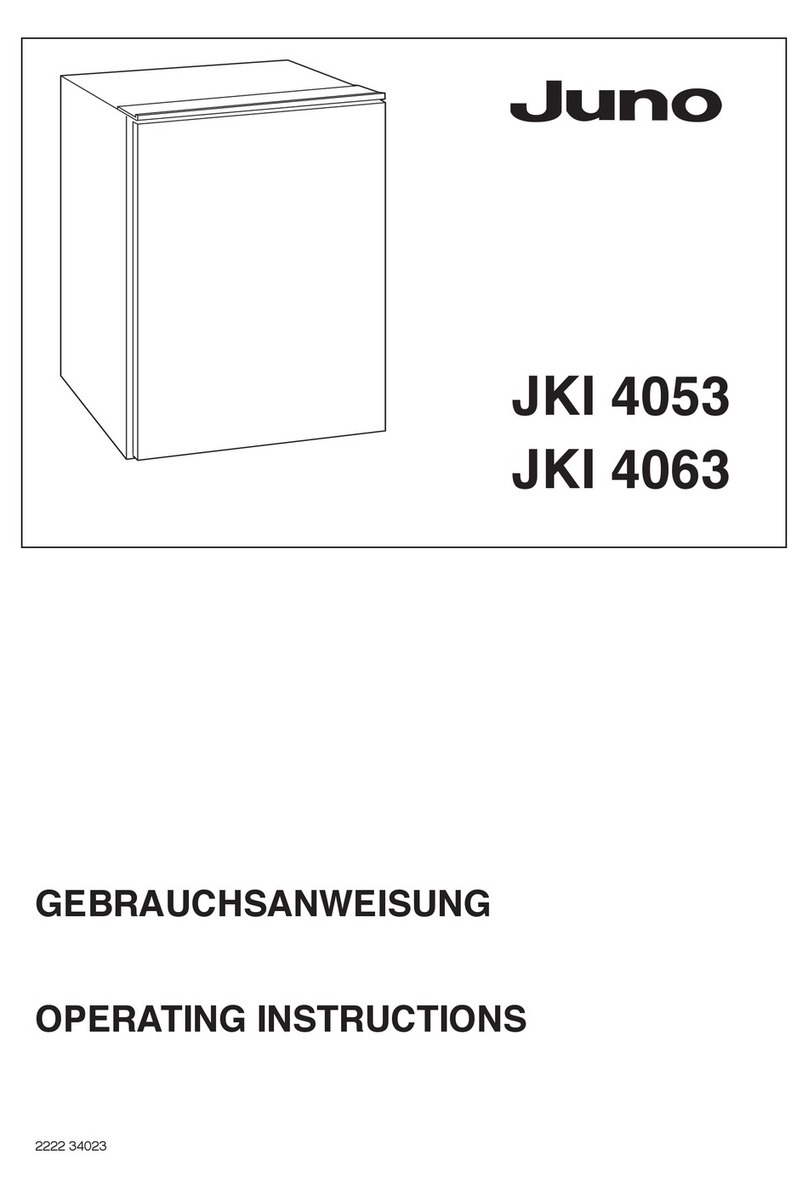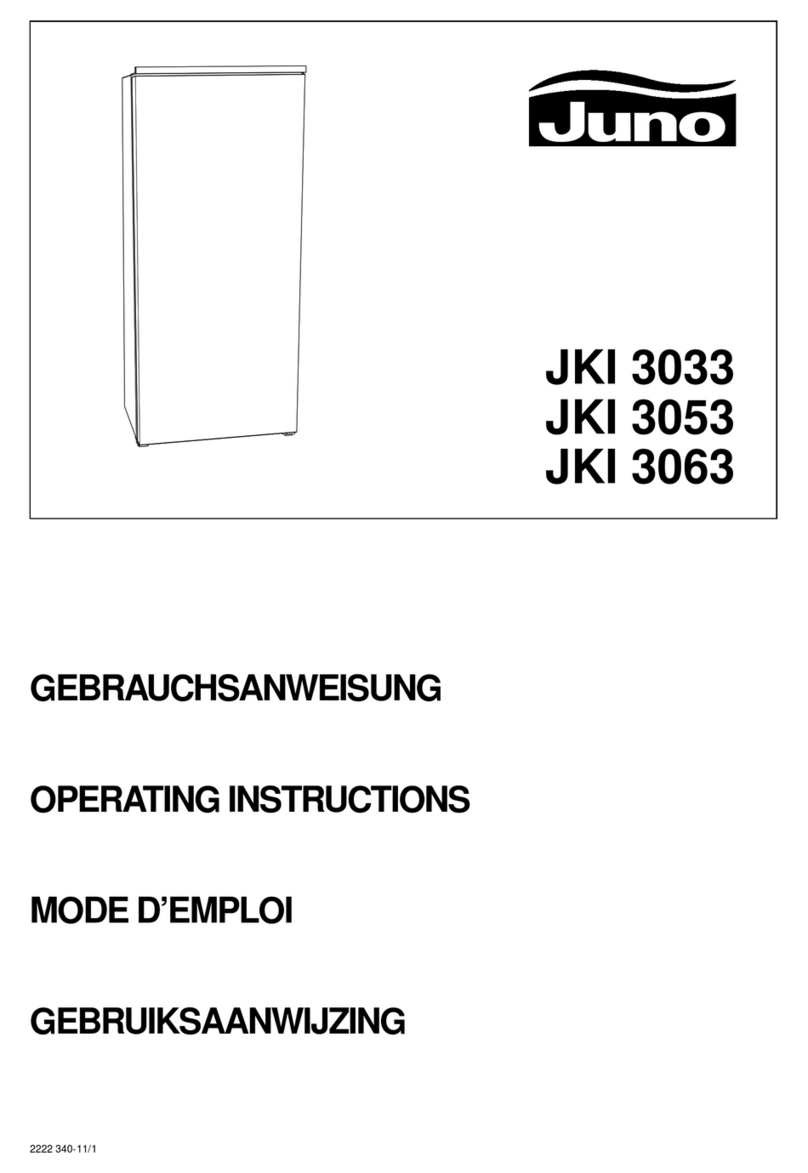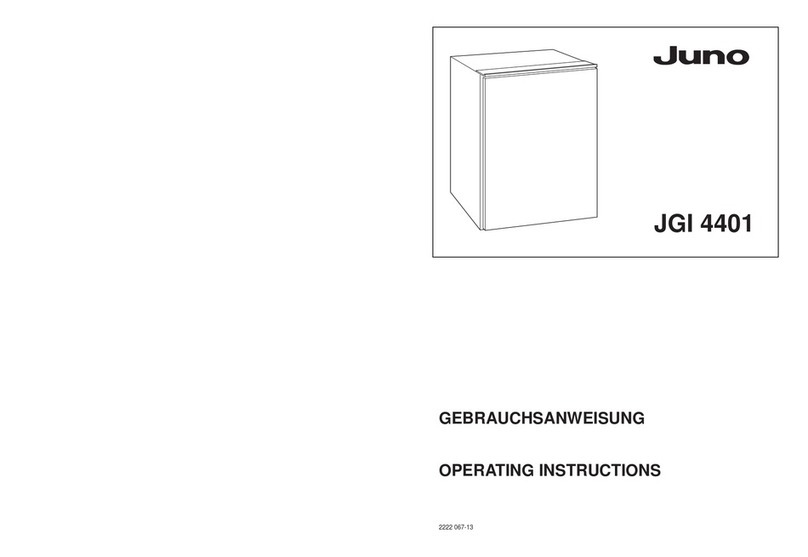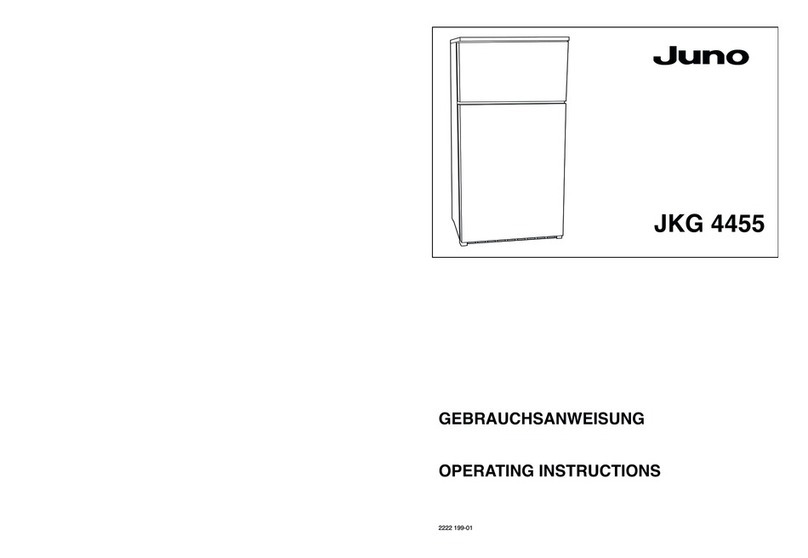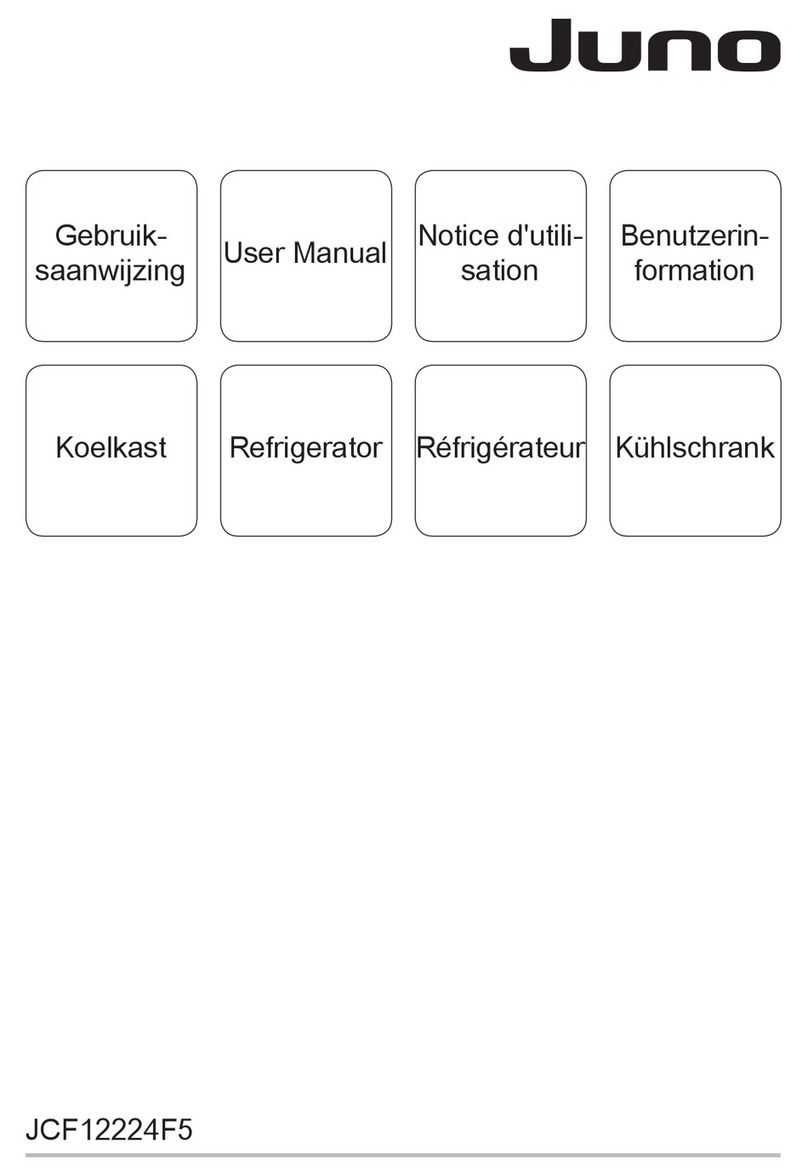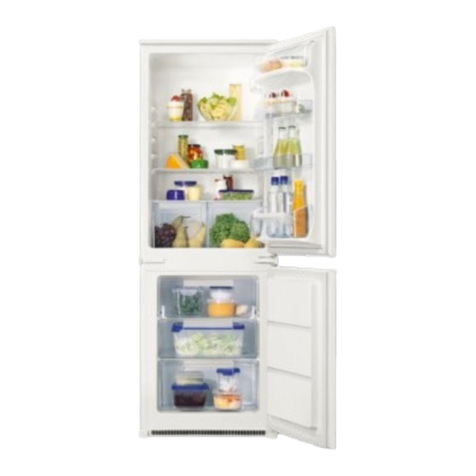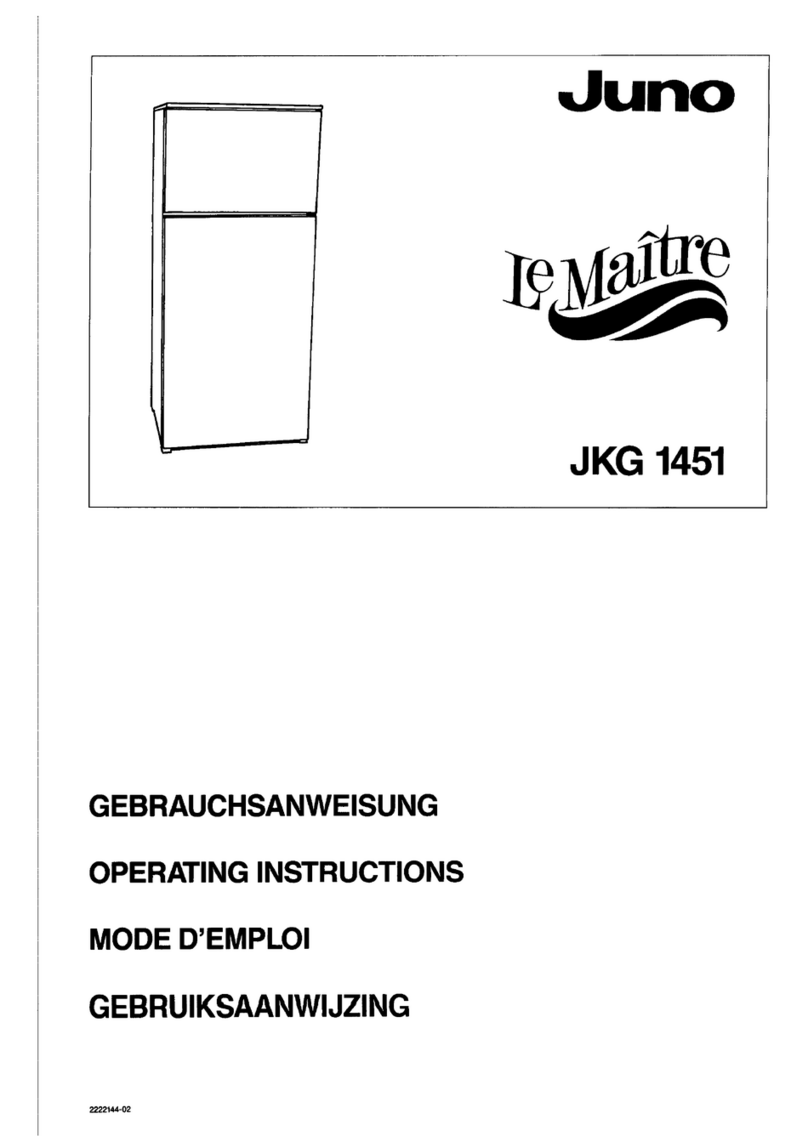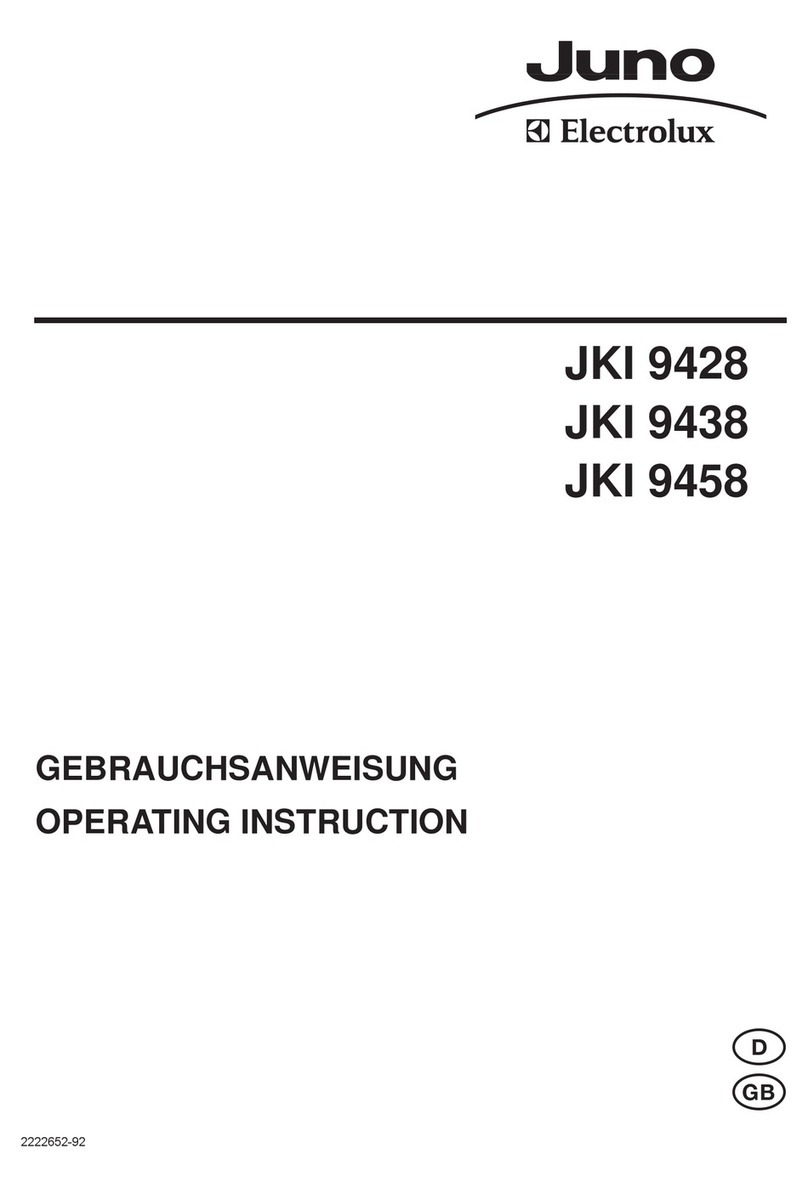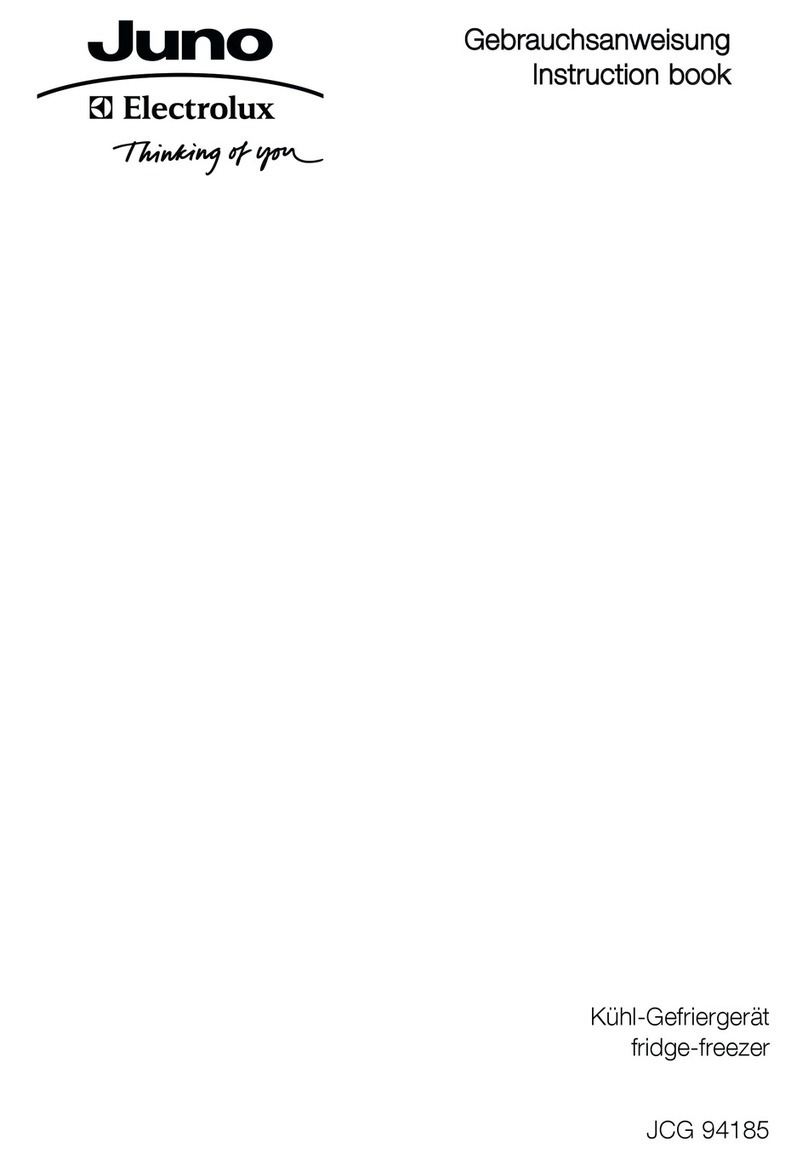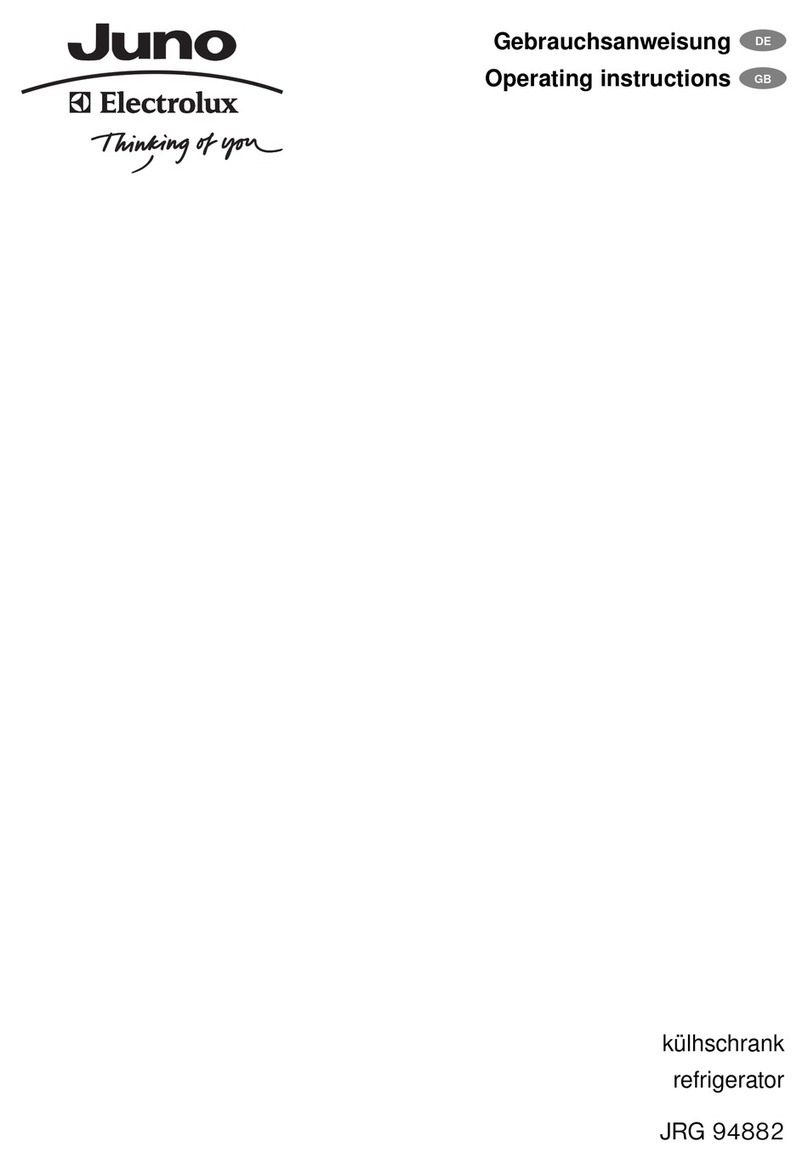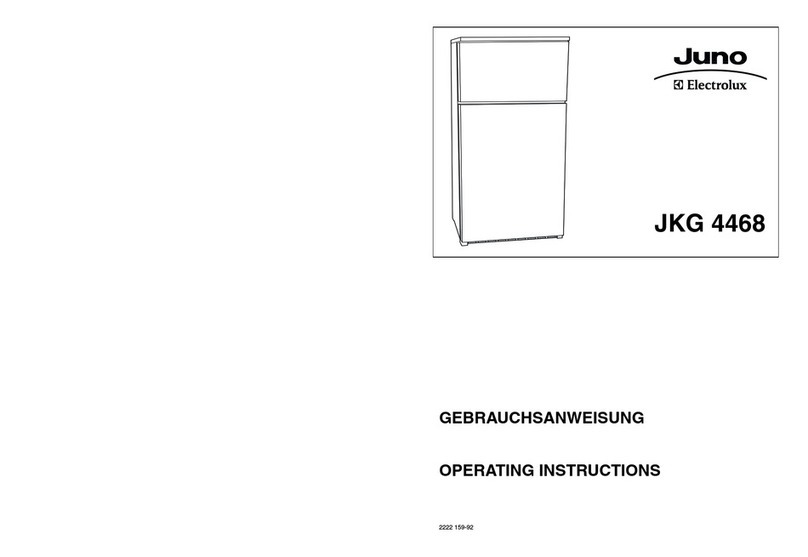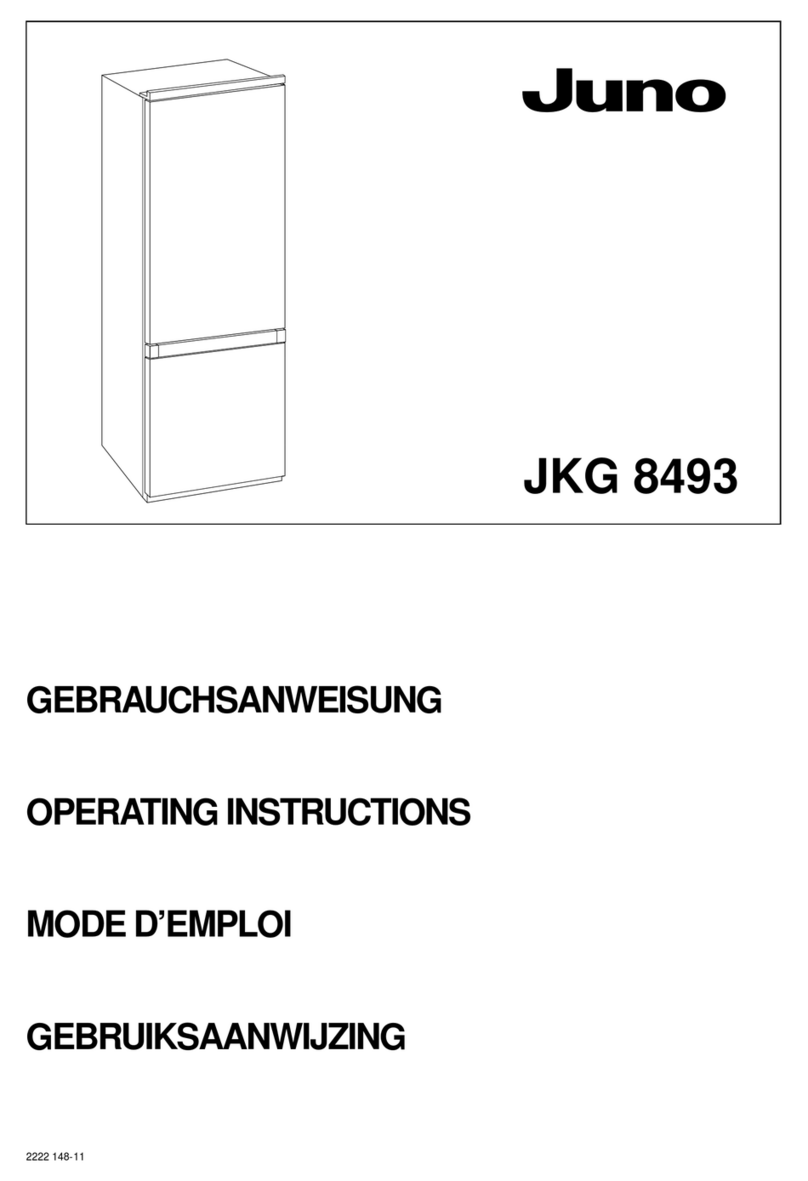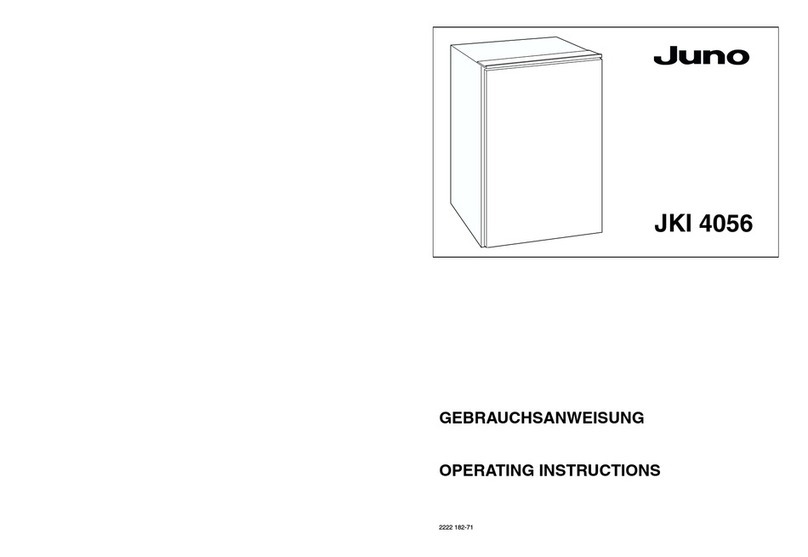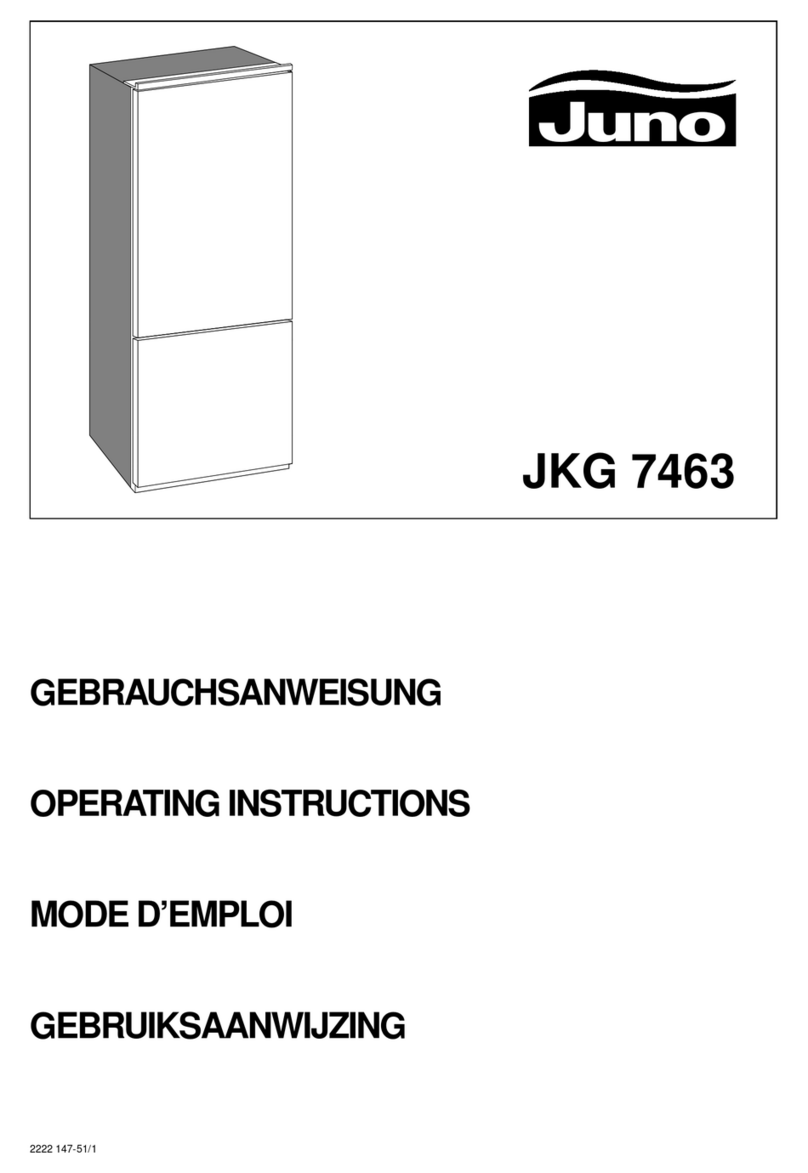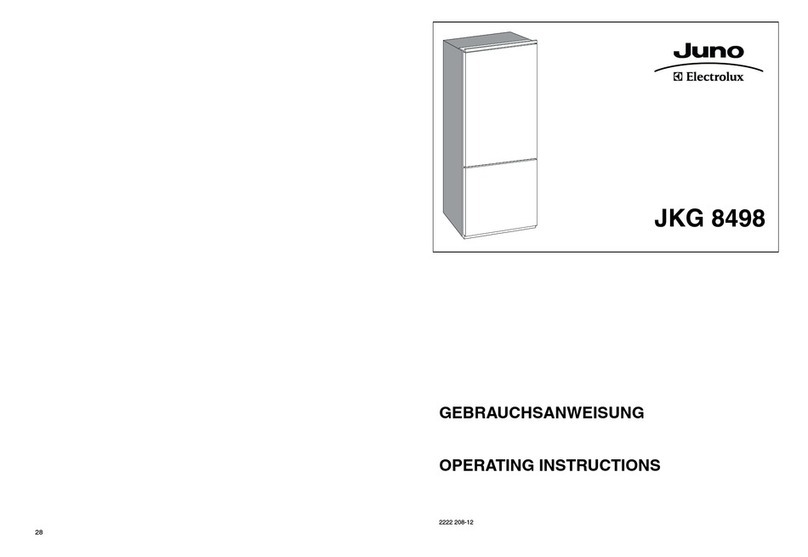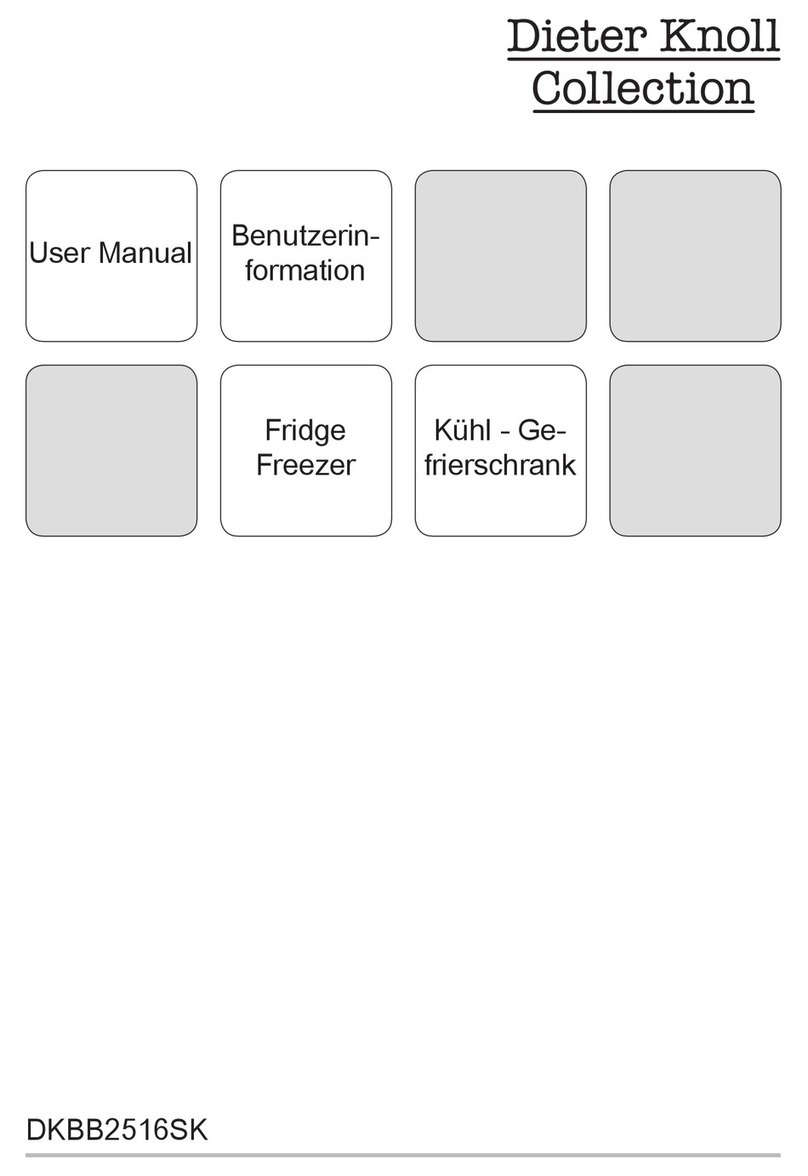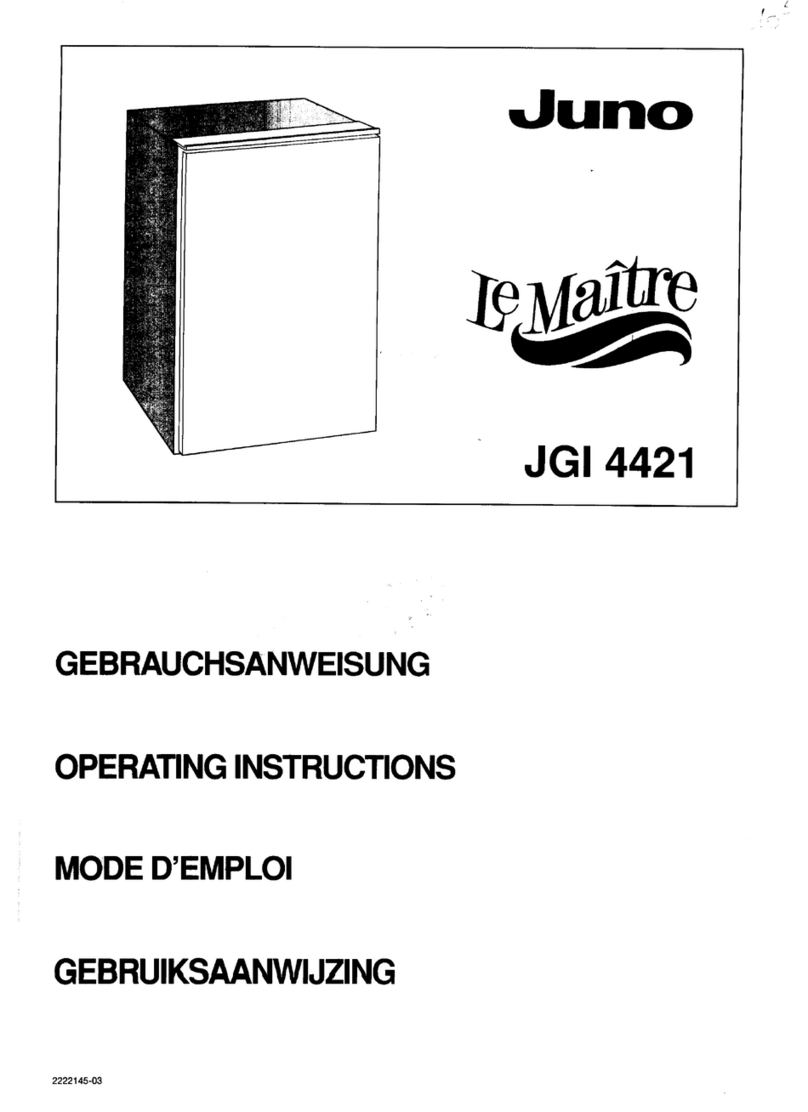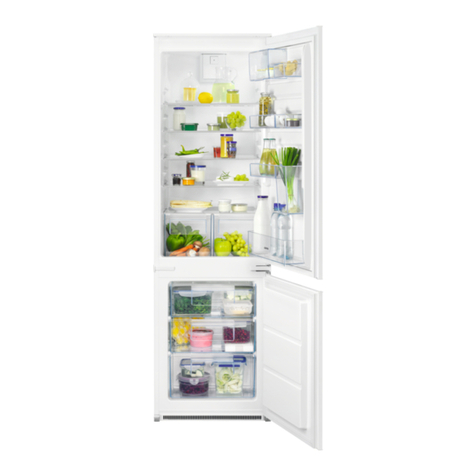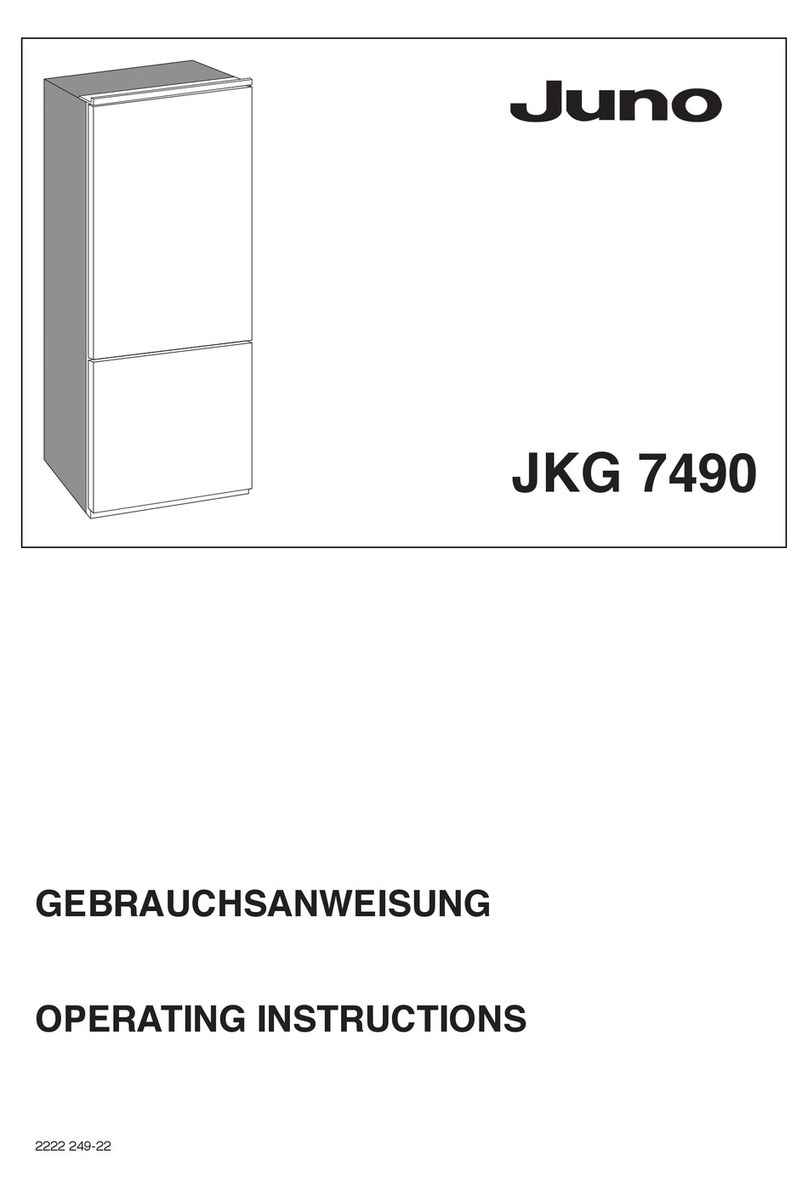16
OPERATION
Refrigerator/Freezer - Starting-up and
Temperature Regulation
Insert the plug into the wall socket.
Open the refrigerator door and turn the thermostat
knob, to be found on the upper right side of the inner
liner, clockwise, beyond the «O» position, to start the
appliance.
Temperature adjustment is obtained by turning the
thermostat knob to the required setting. A medium
setting is generally the most suitable.
However, the thermostat knob setting should be ad-
justed depending on the temperature required inside
the appliance. This, in turn, depends on a number of
factors such as the ambient temperature, the number
of times the door is opened, the quantity of food
stored and the location of the appliance.
Turn the knob clockwise, to higher numbers, to obtain
a lower temperature, or anticlockwise if a higher tem-
perature is required.
Attention
When the refrigerator is set for the coldest tempera-
tures, with a high surrounding room temperature, it will
probably work uninterruptedly, with consequent frost-
ing of the back wall of the compartment or of the
evaporator (if exposed). If this does in fact occur, the
knob should be set to a slightly higher temperature. In
this way the refrigerator automatically defrosts, with a
considerable energy saving.
Important
With room temperature lower than +14°C switch «A»
(see Fig. 10) should be depressed (the built-in light will
come on).
Fig. 10
A- Ambient switch
B- Thermostat knob
D056
AB
Freezing fresh food
The 4-star compartment ( ) is suitable for
long term storage of commercially frozen food, and for
freezing fresh food. Do not exceed the storage times
shown by the manufacturer on the commercially fro-
zen food packets.
Under normal circumstances, to freeze fresh foods it
is not necessary to change the setting of the thermo-
stat knob with respect to the normal running position.
However, for a quicker freezing operation, turn the
thermostat knob to the coldest setting; but remember
that, in this condition, the refrigerating compartment
temperature might drop below 0°C. If this occurs reset
thermostat knob to a warmer setting.
To help you make the most of the freezing process,
here are some important hints:
Place the food to be frozen in the top basket of the
freezing compartment as this is the coldest part.
The maximum quantity of food which can be fro-
zen in 24 hrs is shown on the rating plate.
Only freeze top quality, fresh and thoroughly cleaned
foodstuffs.
Prepare the fresh food in small portions to enable it to
be rapidly and completely frozen and to make it possi-
ble subsequently to thaw only the quantity required at
the time.
Wrap up the food in aluminium foil or polythene and
make sure that the packages are airtight.
It is advisable to show on the single food packet the
freezing-in date to enable you to keep tab of the stor-
age time.
On the rear of the door you will find a list of foods fol-
lowed by a number. These numbers indicate the maxi-
mum period of time for which the food in question
may be conserved (in months).
Do not allow fresh, unfrozen food to touch food which
is already frozen, thus avoiding a rise in temperature
of the latter.
Important
Do not put carbonated liquids (fizzy drinks, etc.) in the
freezing compartment as they may burst.
Water ices, if consumed immediately after removal
from the freezing compartment, can possibly cause
the skin to be freeze burnt.
Remember that, once thawed, frozen food deterio-
rates rapidly.

